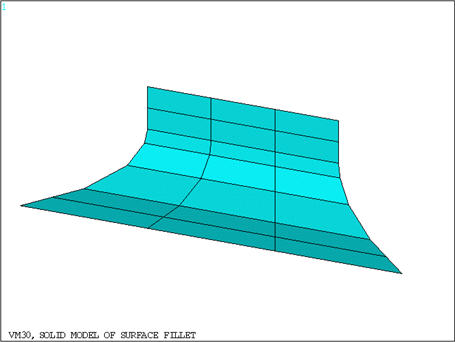VM30
VM30
Solid Model of Surface Fillet
Overview
| Reference: | D. R. Hose, I. A. Rutherford, "Benchmarks for Finite Element Pre-processors", NAFEMS Ref: R0001, December 1993, pg. 23. |
| Analysis Type(s): | Solid Modeling Boolean Operations |
| Element Type(s): | Not Applicable |
| Input Listing: | vm30.dat |
Test Case
A rectangular plate and a trapezoidal plate intersect at an angle of 90° with a common radius fillet of 1 mm. The edge of the fillet lies in a plane. From solid model construction, determine the accuracy of the fillet operation by measuring the out-of-plane deviation of subsequent meshed node locations.
| Geometric Properties | |||
|---|---|---|---|
|
Analysis Assumptions and Modeling Notes
The model is created using geometric primitives. The fillet is created using an area fillet operation. A glue operation is used to provide continuity for creating the fillet. An arbitrary element type (SHELL281) is defined for meshing purposes. A local coordinate system is created in the plane of the weld. The nodes are listed in that coordinate system to access the maximum out-of-plane deviation. The maximum absolute deviation is reported.




